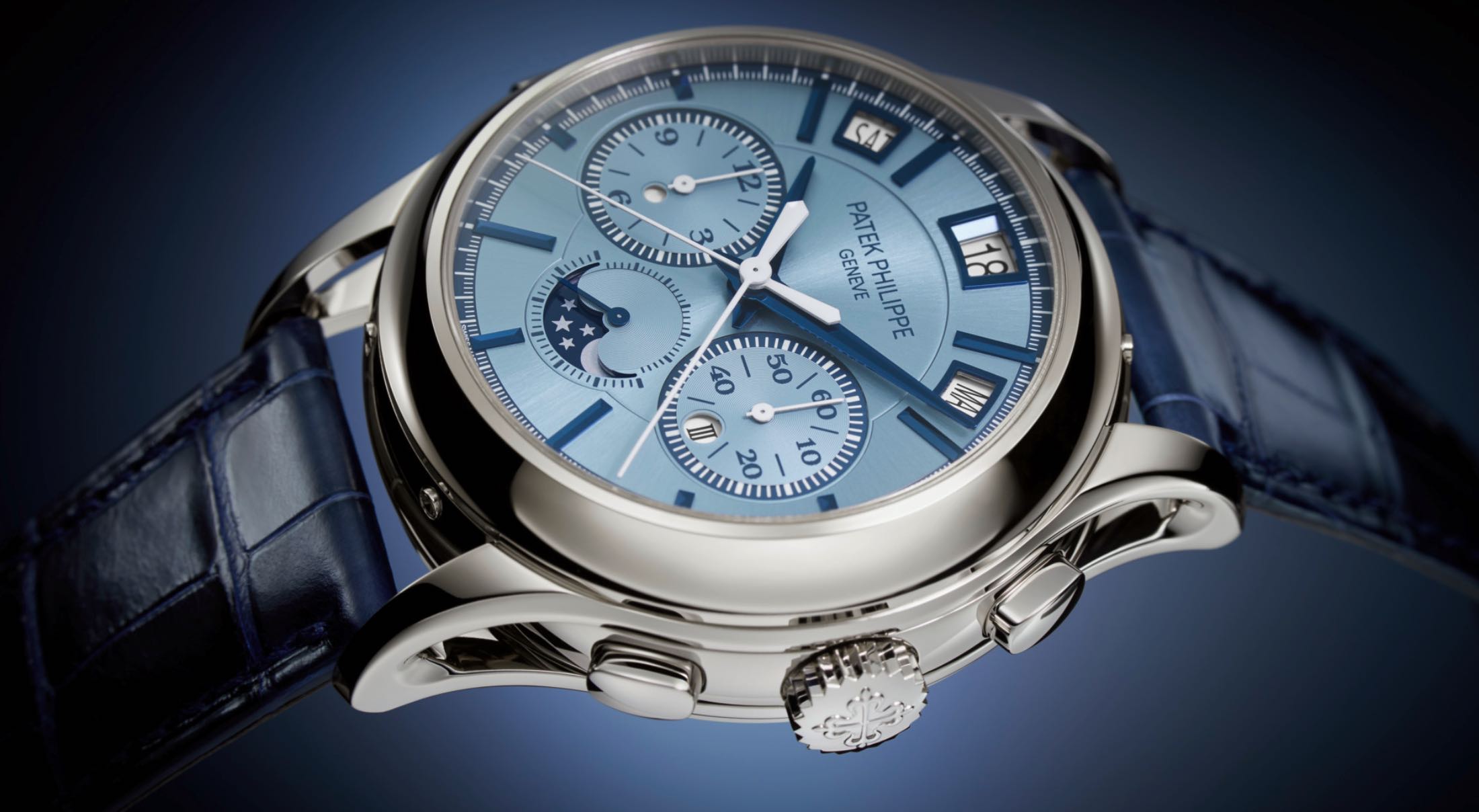In Best of the Best, we honour the brands and people behind the most covetable products. Here are seven great drives that topped our 2024 list

Best Supercar: Lamborghini Revuelto
The hybrid successor to the Aventador is one of the wildest Raging Bulls we’ve driven. Wisely, Lamborghini gifted the Revuelto the Aventador’s raging heart—a naturally aspirated 6.5-litre V12—as there’s simply no substitute for that growing roar as the tachometer climbs. With a trio of electric motors, output is a whopping 1,001hp, which allows the Revuelto to cover zero to 100km/h in 2.5 seconds on its way to a top speed of 349km/h. Under hard acceleration, it’s a delightful assault on the senses.
But immense power is nothing without poise. The model’s unflappable aplomb is thanks to better weight distribution and increased downforce compared with the Aventador, plus software that enables the electric motors either to fill torque gaps or enhance traction control, depending on what’s needed. Then there’s the super processor, constantly sending chassis-control corrections in order to enable cornering speeds that hardly seem feasible for a mere mortal to handle behind the wheel—but the Revuelto finds the grip (despite underwhelming Bridgestone tyres—consider swapping out the rubber) and makes its performance envelope more approachable for a wider swathe of drivers.
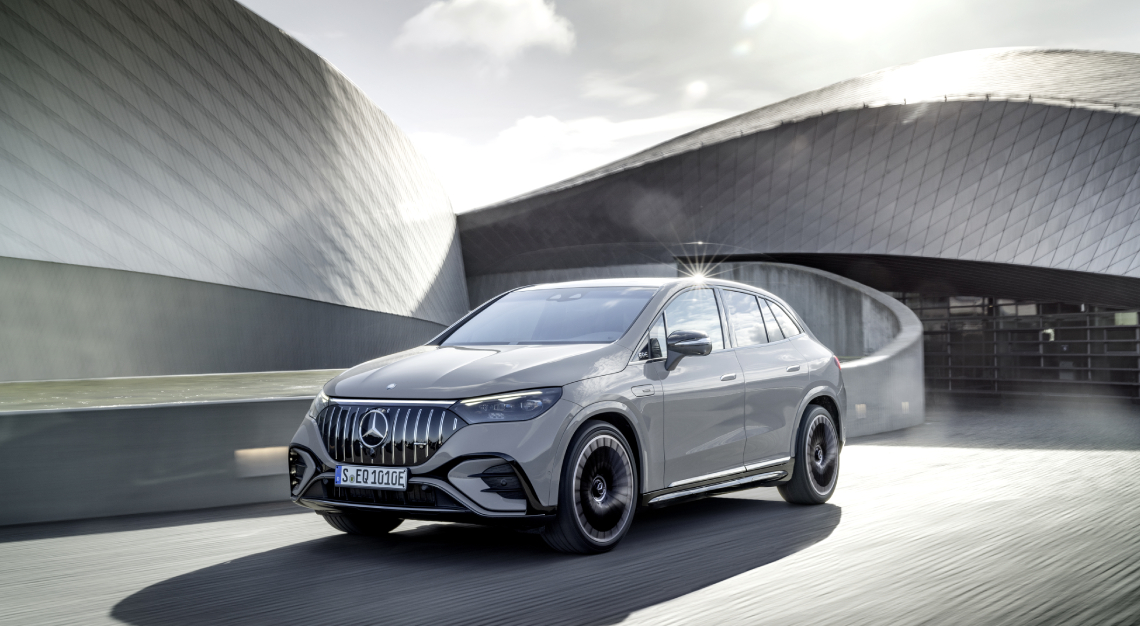
Best SUV: Mercedes-AMG EQE SUV
In 1886, when Karl Benz introduced his single- cylinder, four-stroke Patent-Motorwagen, the internal-combustion engine was a breakthrough of bleeding-edge technology. Today, the marque is looking past fossil fuels while remaining committed to innovative technology, which sums up the Mercedes-AMG EQE SUV experience. This is the inaugural all-electric SUV for AMG, the German automaker’s motorsport-focused arm, and the pedigree is apparent despite the 2,616kg kerb weight and lack of AMG’s signature throaty growl. Dual electric motors supported by a 90.6kWh battery make the base model a 617hp grocery-getter with 950Nm of torque and the ability to do the century sprint in just 3.4 seconds.
In this cut-throat category there are, of course, faster and more balletic SUVs, but what truly separates this Mercedes from the rest of the field is a cabin that George Lucas would envy. Consider the wildly detailed augmented-reality head-up display, Burmester 3D surround sound, and sprawling, 56-inch Hyperscreen dash with a software system that becomes increasingly customised to your preferences over time, just for starters. This is a vehicle to delight early adopters who want a maximalist alternative to Tesla’s austere minimalism—a bigger, bolder, more luxuriantly utilitarian version of what an electric vehicle can and perhaps should be.
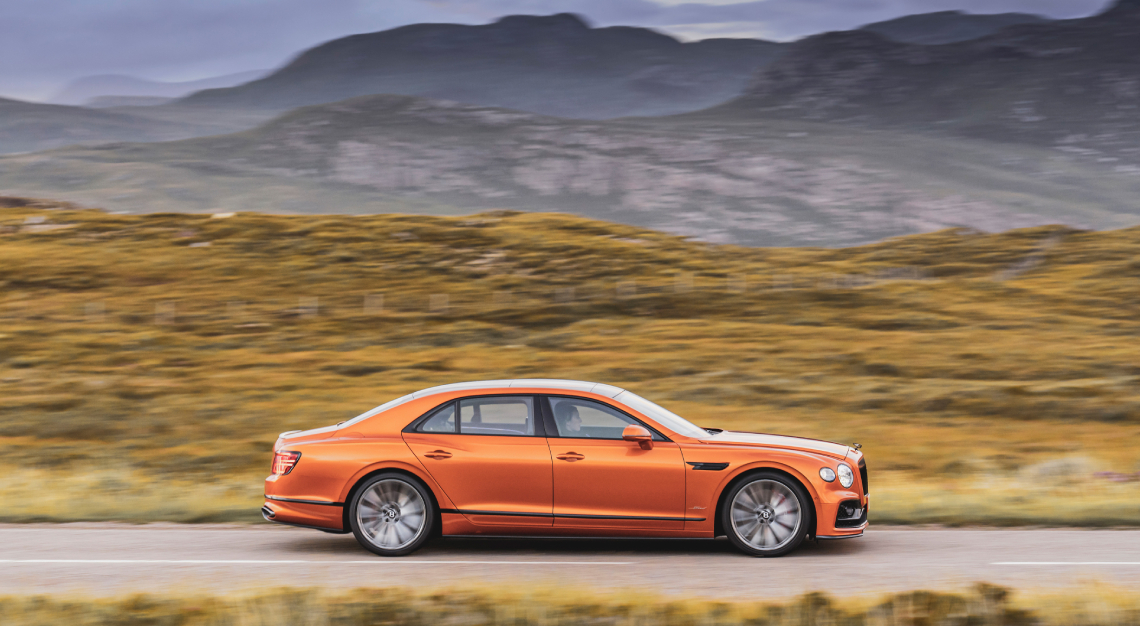
Best Sedan: Bentley Flying Spur Speed
Don’t call it a comeback yet, but the sedan is entering a new age of exclusivity and performance, and leading the charge is the Bentley Flying Spur Speed. The 626hp four-door is expected to be among the last in the 105-year-old automaker’s line-up to be powered solely by a 12-cylinder engine—a power plant Bentley will stop producing this summer. Yet nostalgia isn’t why it tops this category for us. That would be the car’s combination of athleticism and finish.
The Flying Spur Speed hustles from zero to 97km/h in 3.7 seconds—quicker than the all-electric Rolls-Royce Spectre—and with a top speed of 333km/h, it can leave a 671hp McLaren Artura in the rearview. The car’s dynamic all-wheel drive system and all-wheel steering add grip and agility that belie the 2,437kg kerb weight, while the 48-volt Dynamic Ride set-up adjusts stiffness in the turns; it’s shockingly nimble for such a stately four-door, even on track. The cabin, as expected, is defined by Bentley’s attention to visual and tactile delight, including such options as exotic-wood veneers, knurled switchgear and 3D diamond-quilted leather. While this benchmark sedan may represent the end of the marque’s unassisted 12-cylinder era, there’s nothing bygone about it.

Best Sports Car: Porsche 911 S/T
The Porsche 911 S/T is a limited-production hat tip to the model’s 60th anniversary—but rather than embody the German marque’s vision for its flagship car moving forward, this variant strips away features and technology to recall the spartan spirit of early race-going 911s. In the interest of trimming fat, likable hallmarks such as rear-axle steering and a hydraulic clutch are gone; the obsessive retuning results in a drive experience that’s raw, unfiltered and utterly engaging.
The S/T’s rough edges—among them a tambourine-like rattle at idle, akin to the soundtrack of a classic Ducati’s dry clutch—will disconcert the uninitiated, and the steering is so communicative that the wheel dances in hand. The overall result isn’t for everyone, but the unabashed violence of the 518hp flat-six engine, the shortened (manual only) gear ratios, and the sharpness with which this lightest-available 911 slices and dices corners are why the 911 S/T has landed on this list. Don’t let anger at the inevitable dealer mark-ups taint the engineering achievement. As a rolling ode to old-school motoring, sports cars don’t get better than this.
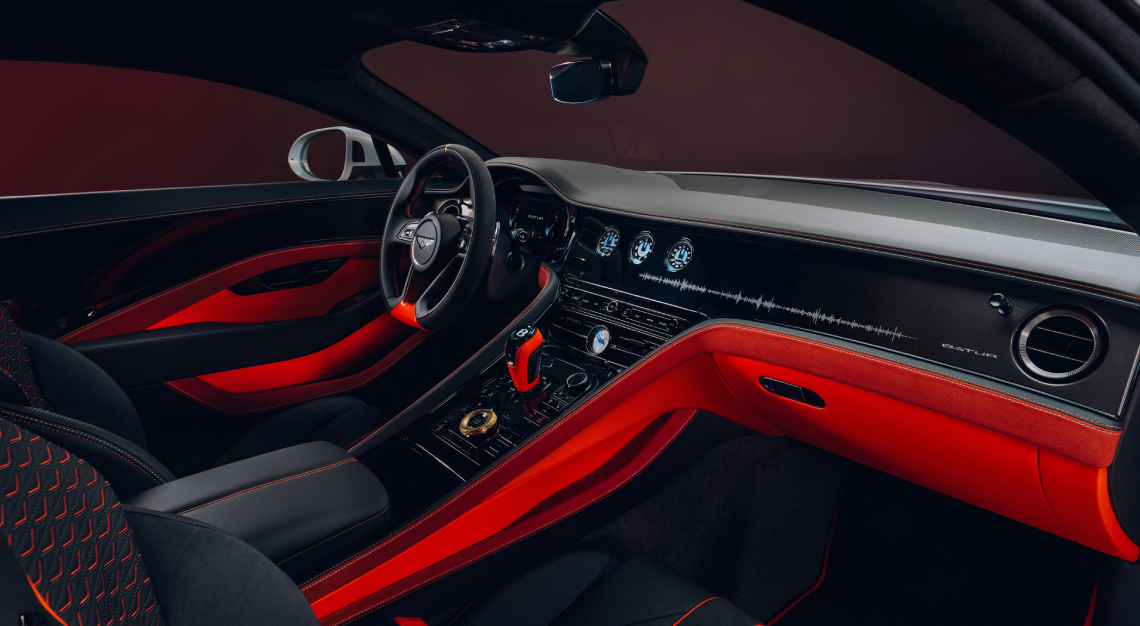
Best Interior: Bentley Batur
Outgoing Bentley boss Adrian Hallmark—soon to be CEO at Aston Martin—pioneered the automaker’s so-called industrialisation of personalisation, which now translates to approximately 40 per cent of Bentleys leaving the factory with bespoke options from the Mulliner coachbuilding division.
The 740hp Bentley Batur, based on the Continental GT Speed, takes this customisation to the next level, as each of the 18 examples is unique to its owner’s specifications. Inside, there’s a pleasing moratorium on plastic, with controls such as the air-vent organ stops and drive-mode dial available in titanium or 3D-printed 18k gold. Also optional: a 20-speaker Naim audio system, one of the best we’ve heard in a production car.
The Batur flexes on sustainable materials, too. Its sculpted bucket seats can be hand-trimmed in low-carbon leather from Scotland or a leather-like material made from the husks of coffee beans. A flax-based composite for the dashboard veneer can also be requested, as can deep-pile carpets derived from recycled yarn. The two-seater even offers tailored luggage occupying a shelf that replaces the Continental’s rear seats—though just spending time in this seven-figure enclave may be all the escape required.
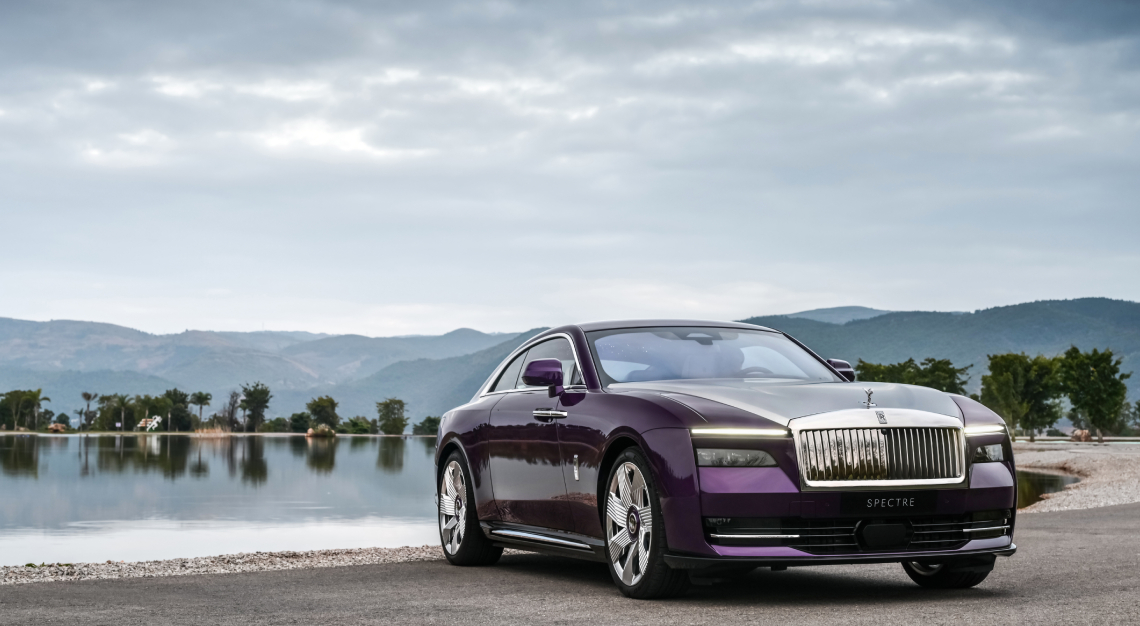
Best Electric Vehicle: Rolls-Royce Spectre
For many of the world’s most prestigious automakers, the muted driving characteristics of zero-emissions power trains are at odds with their most visceral and long-standing brand signifiers, from engine notes to transmission tuning. Not so for smooth and silent Rolls-Royce, whose ethereal Spectre only enhances the 120-year-old marque’s signature feel. It utilises two electric motors (making nearly 900Nm of torque) and a 120kWh battery, a combination that allows the 584hp Spectre to hit 97km/h from a standstill in 4.4 seconds despite its 2,890kg kerb weight.
The drive is nimbler than expected; handling is refined by rear-wheel steering and a bolstered aluminium space-frame chassis, with the Spectre sporting a 30 per cent increase in structural rigidity compared to its Ghost sibling. But between the electronically limited top speed of 249km/h, overly aggressive regenerative braking, and an Environmental Protection Agency- estimated 428km range, this is a vehicle meant for long cruises behind the wheel or shorter jaunts in the back seat. The interior showcases Goodwood’s first entirely digital dash and, complementing the Starlight Headliner, the new Starlight Door treatment with 4,796 LED lights—a fitting accent for Rolls-Royce’s stellar all-electric debut.
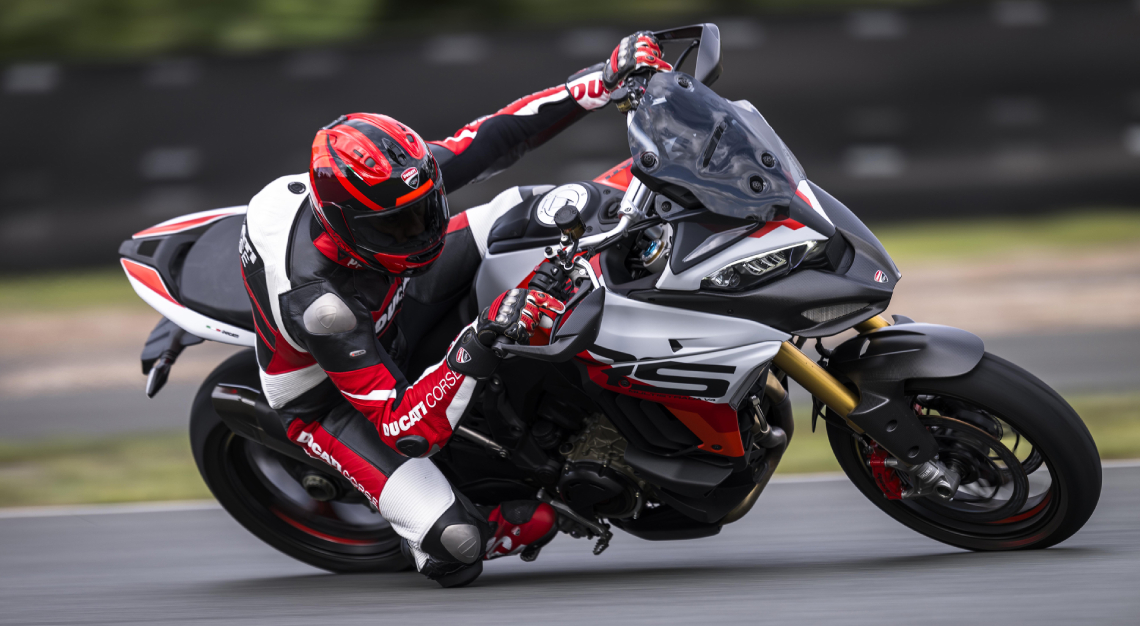
Best Motorcycle: Ducati Multistrada V4 RS
The 180hp Ducati Multistrada V4 RS is a track-day missile that can also go the distance as a tourer. Its free-revving V4 power plant is derived from that of Ducati’s Panigale V4 superbike, contributing to the exceptional athleticism of a machine that still retains the versatility inherent to the innovative Multistrada line—a performance-to-utility ratio that was almost unthinkable a decade ago. The bike’s multifaceted nature is evident in its four ride modes: Race, Sport, Touring and Urban. Along with its 1,103cc Desmosedici Stradale engine, the Multistrada V4 RS owes its performance in part to weight- reduction measures that include an aluminium-monocoque frame, a titanium subframe, a single-sided aluminium swingarm and Marchesini forged-aluminium wheels.
Then there’s the trick electronics suite, complete with adaptive cruise control (thanks to front and rear radar technology), blind-spot detection, and a host of nannies to help control all that output. We can vouch for the bike’s performance bona fides on a closed circuit, but definitely tick the box for the optional panniers—the Multistrada V4 RS also wants to devour long stretches of pavement. A comfortable tourer that could embarrass a five- year-old sportbike on track? Yes, please.


